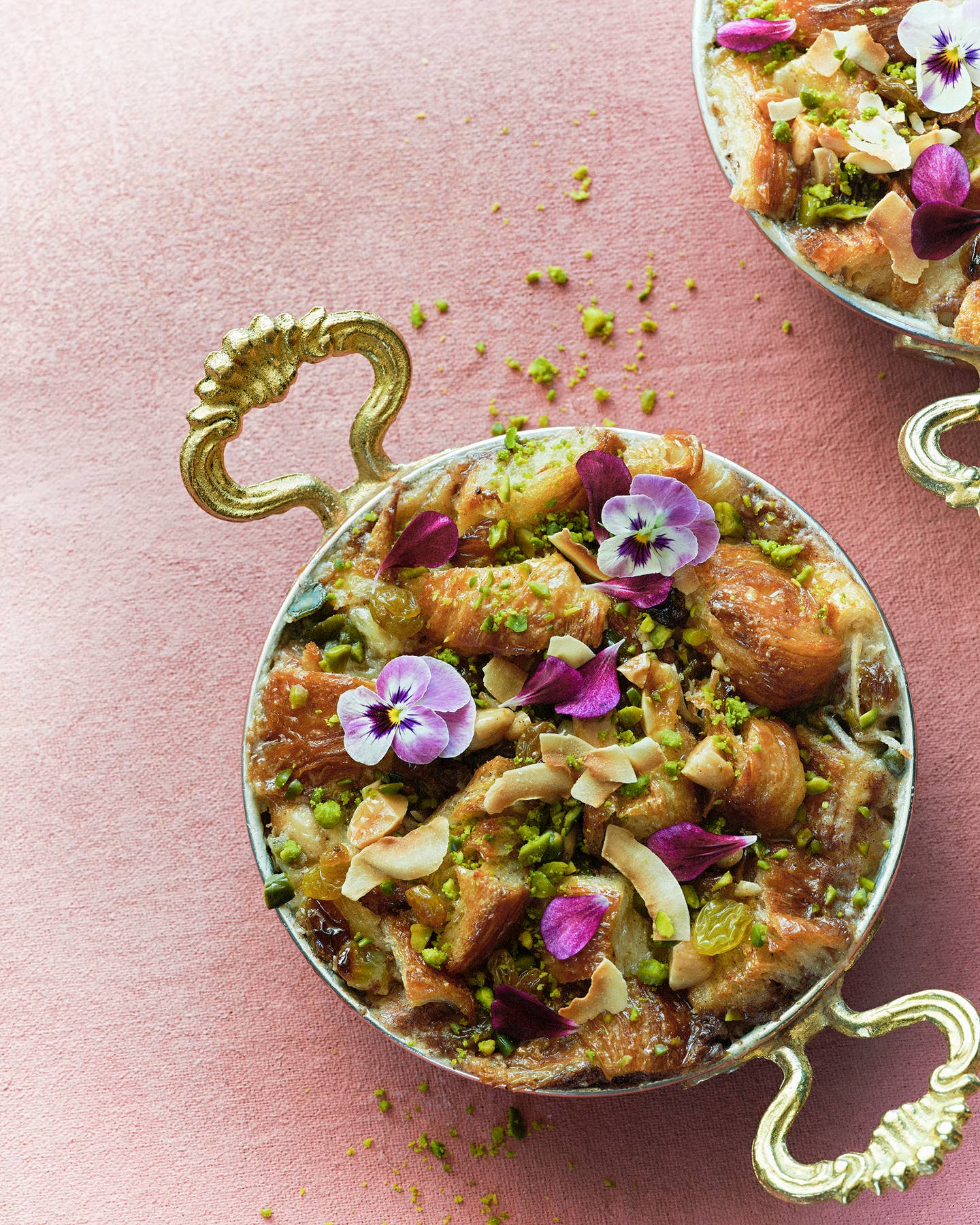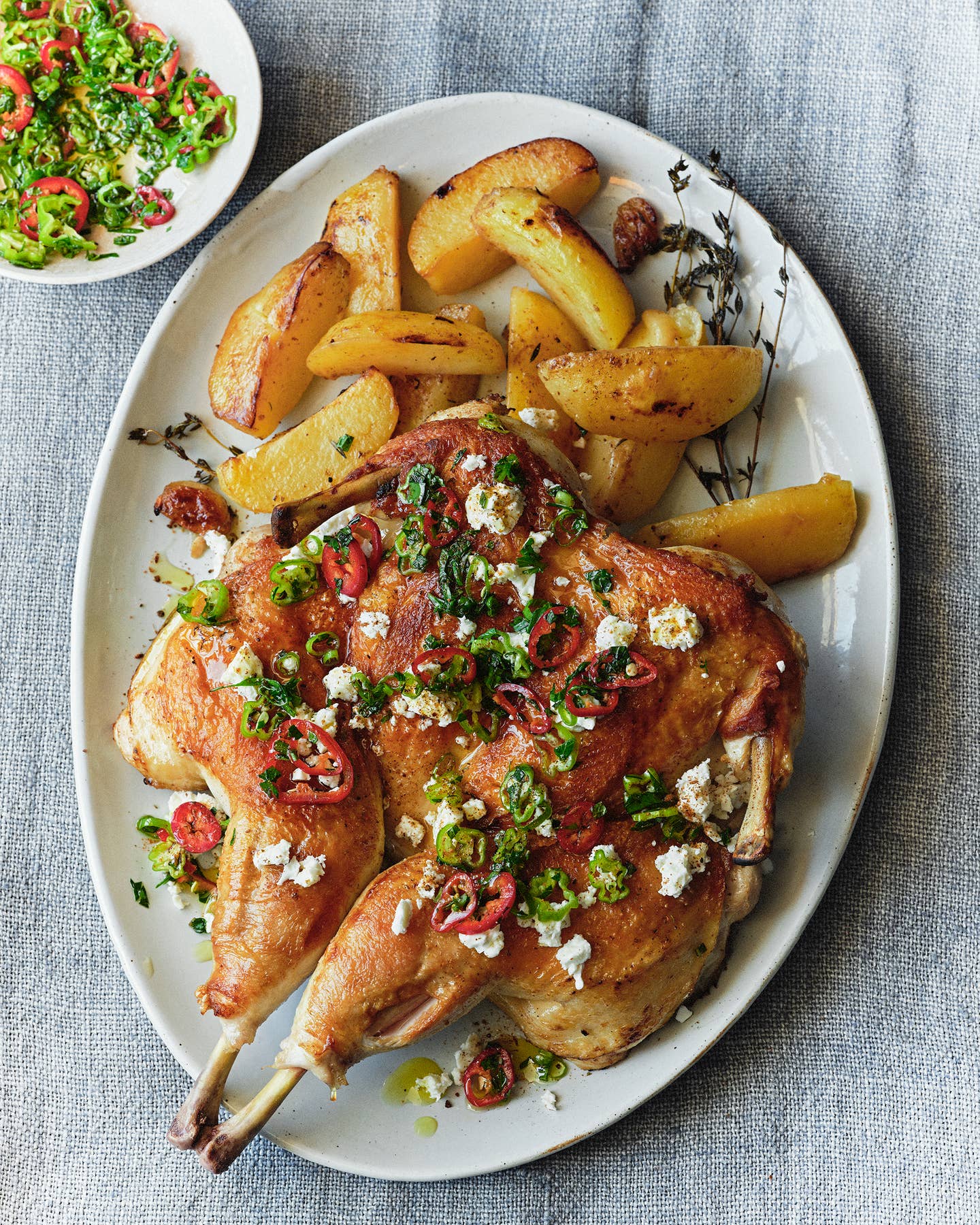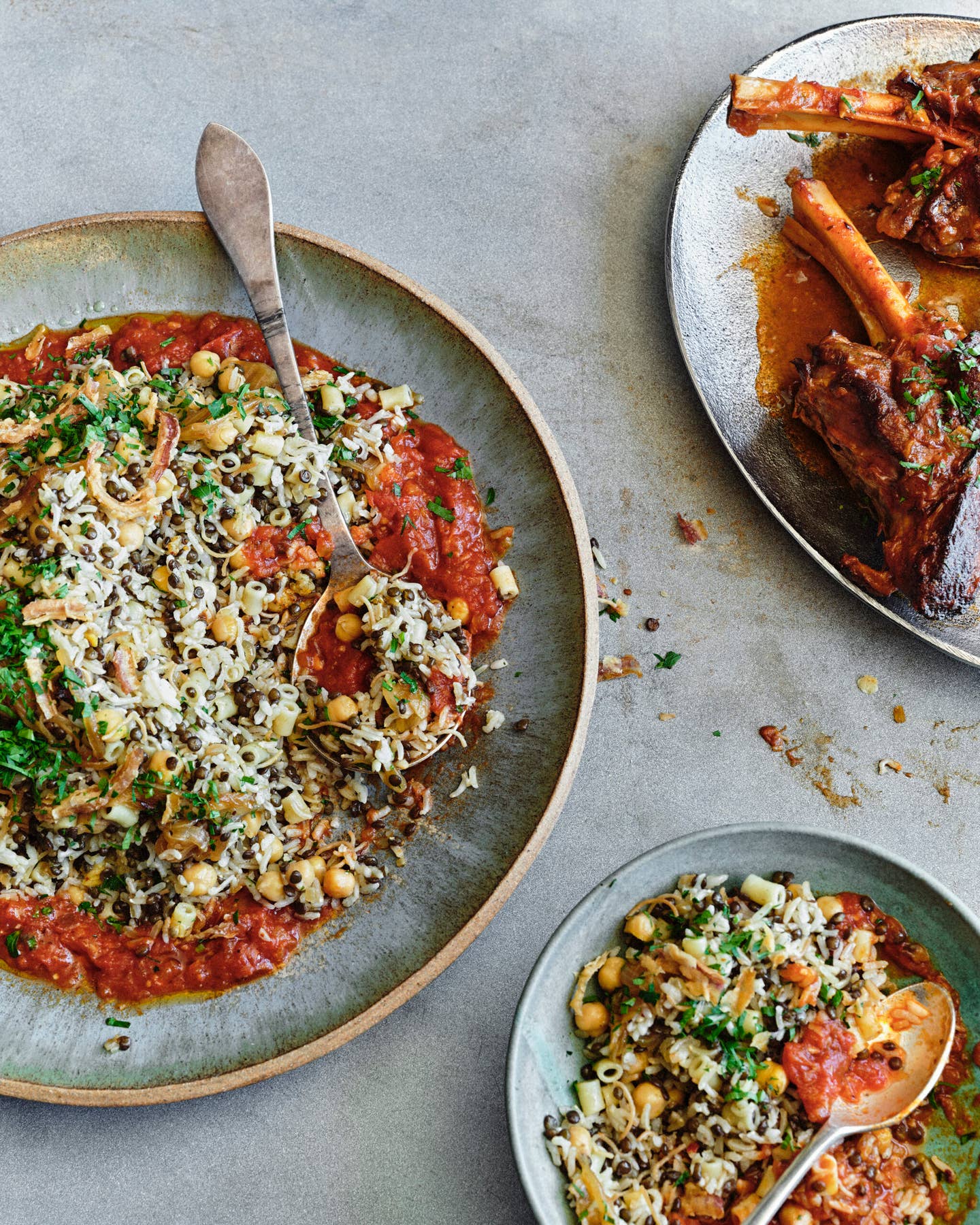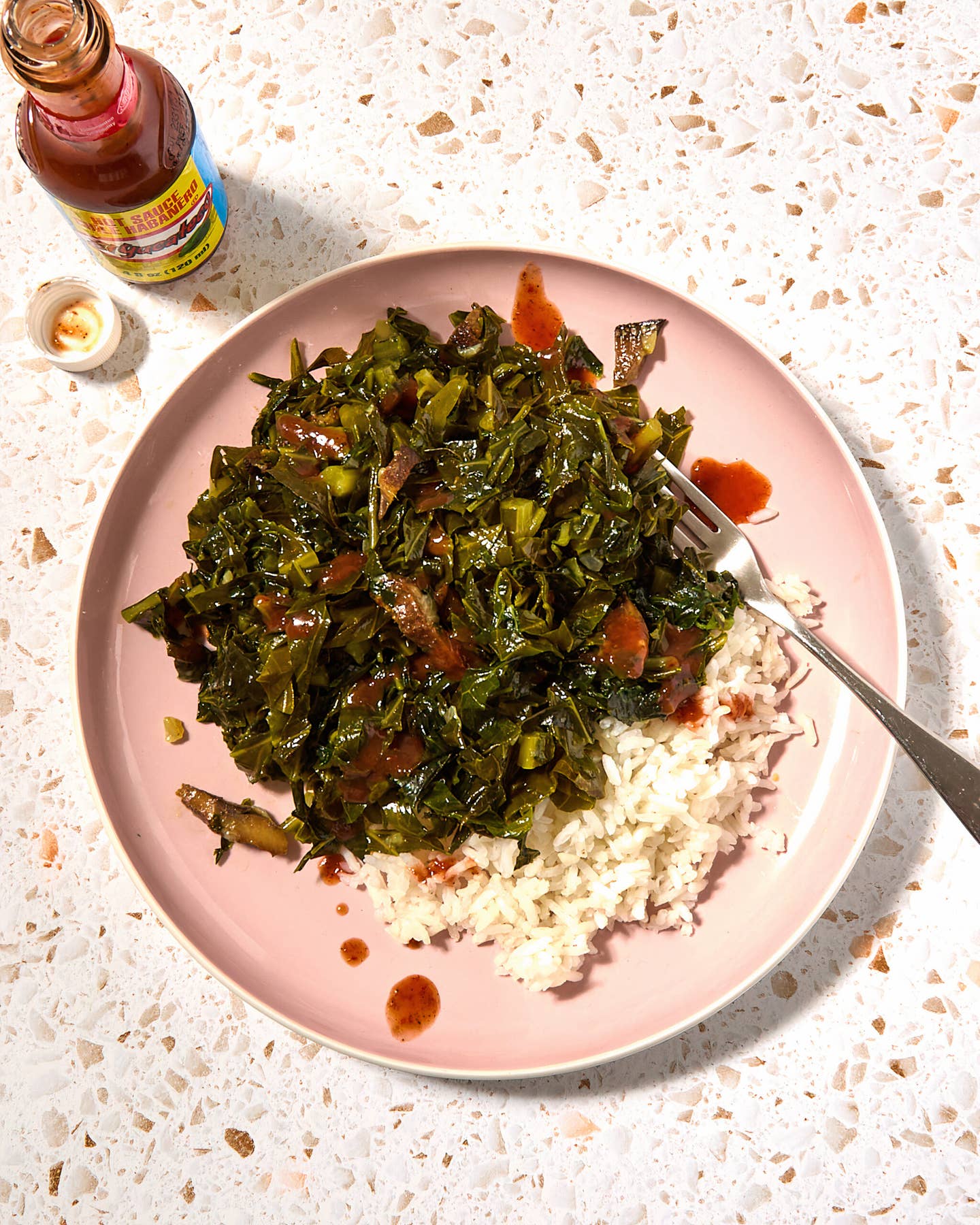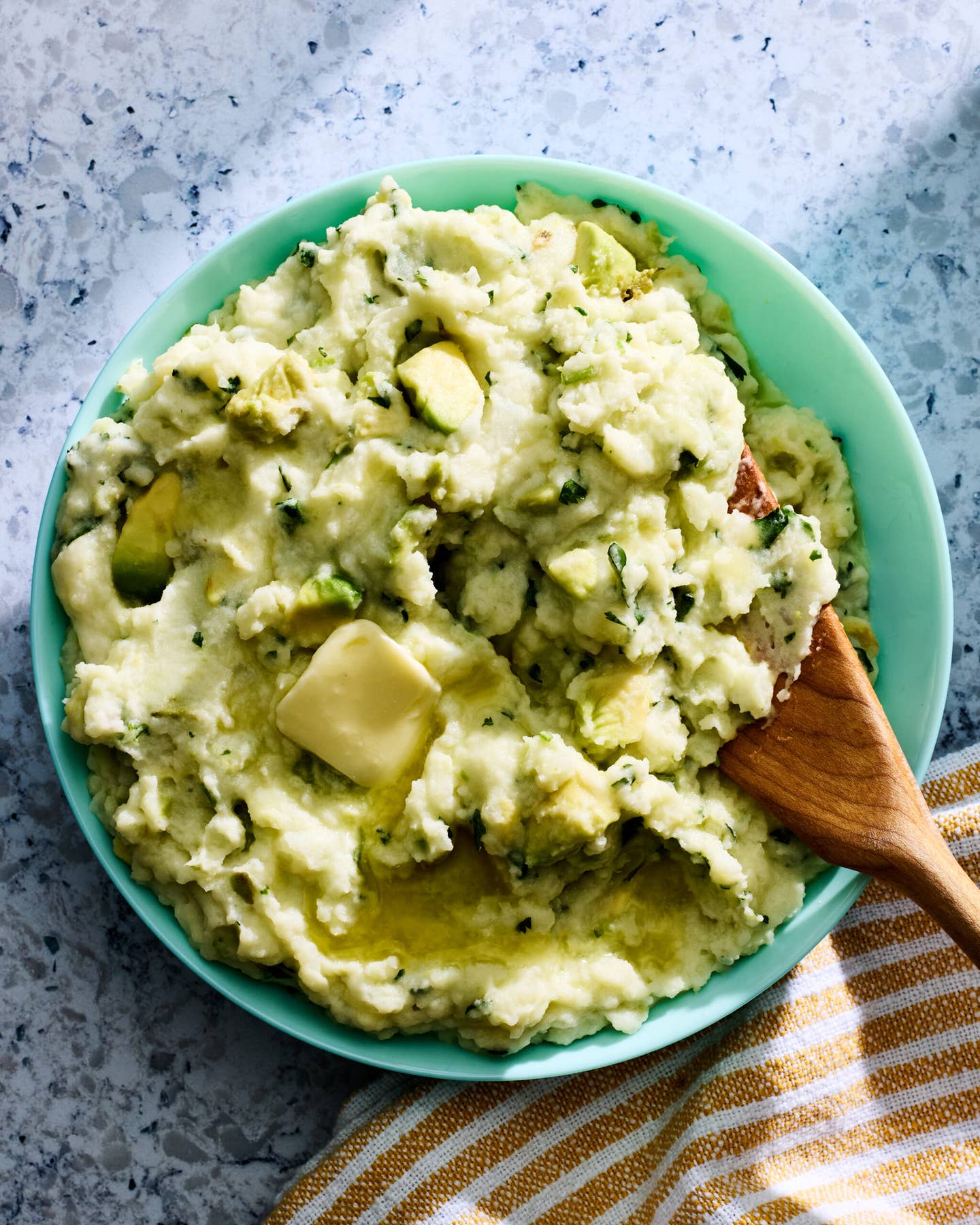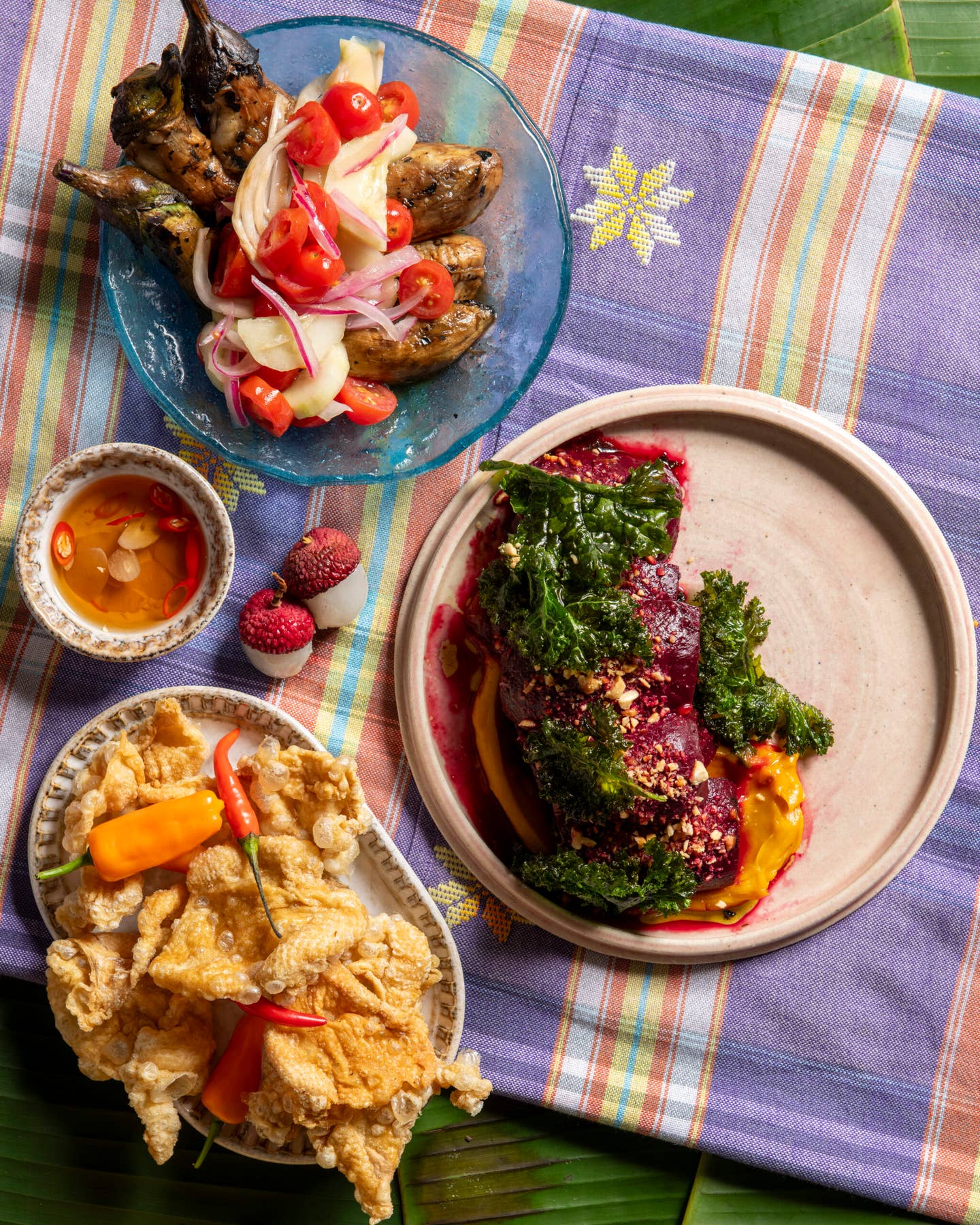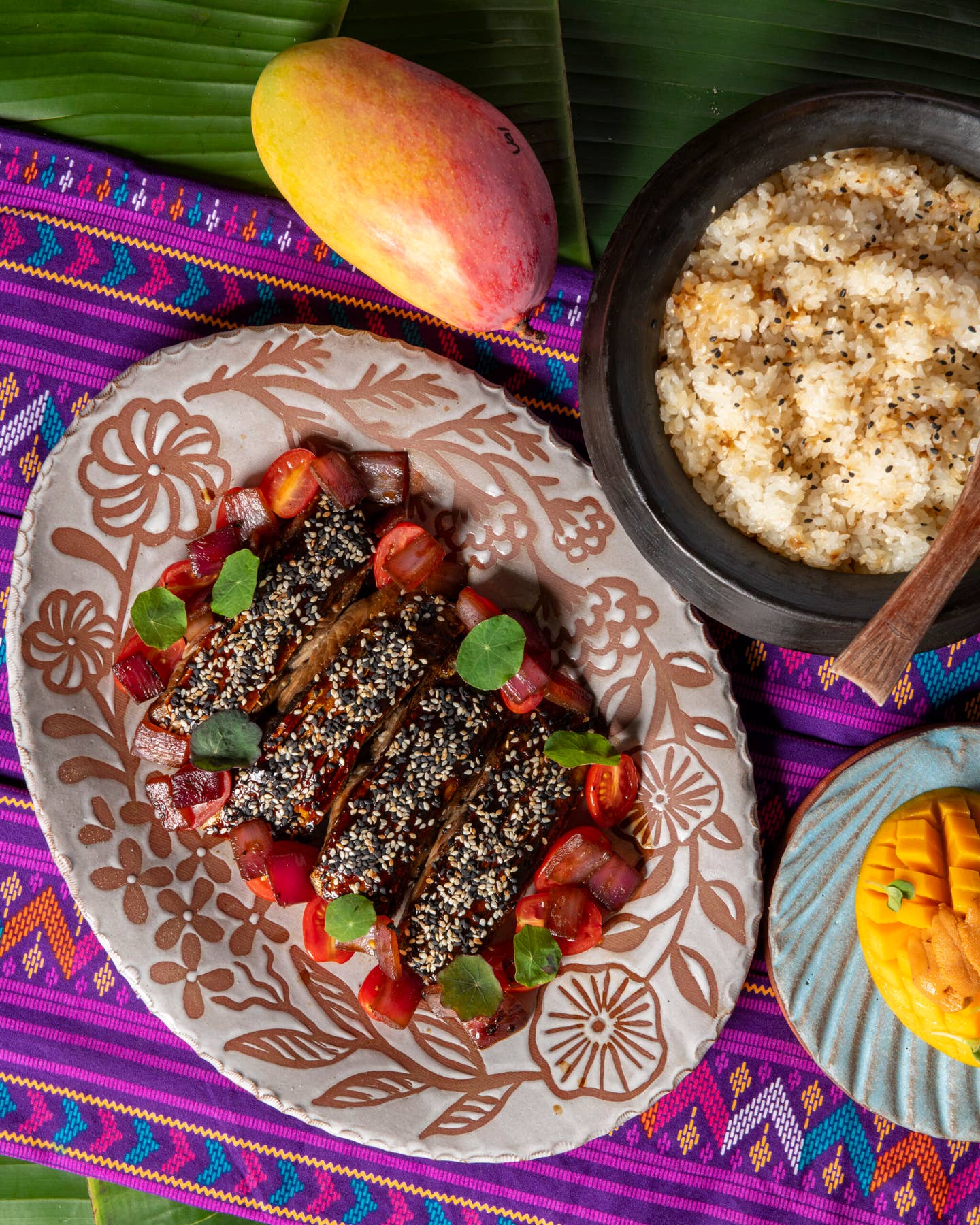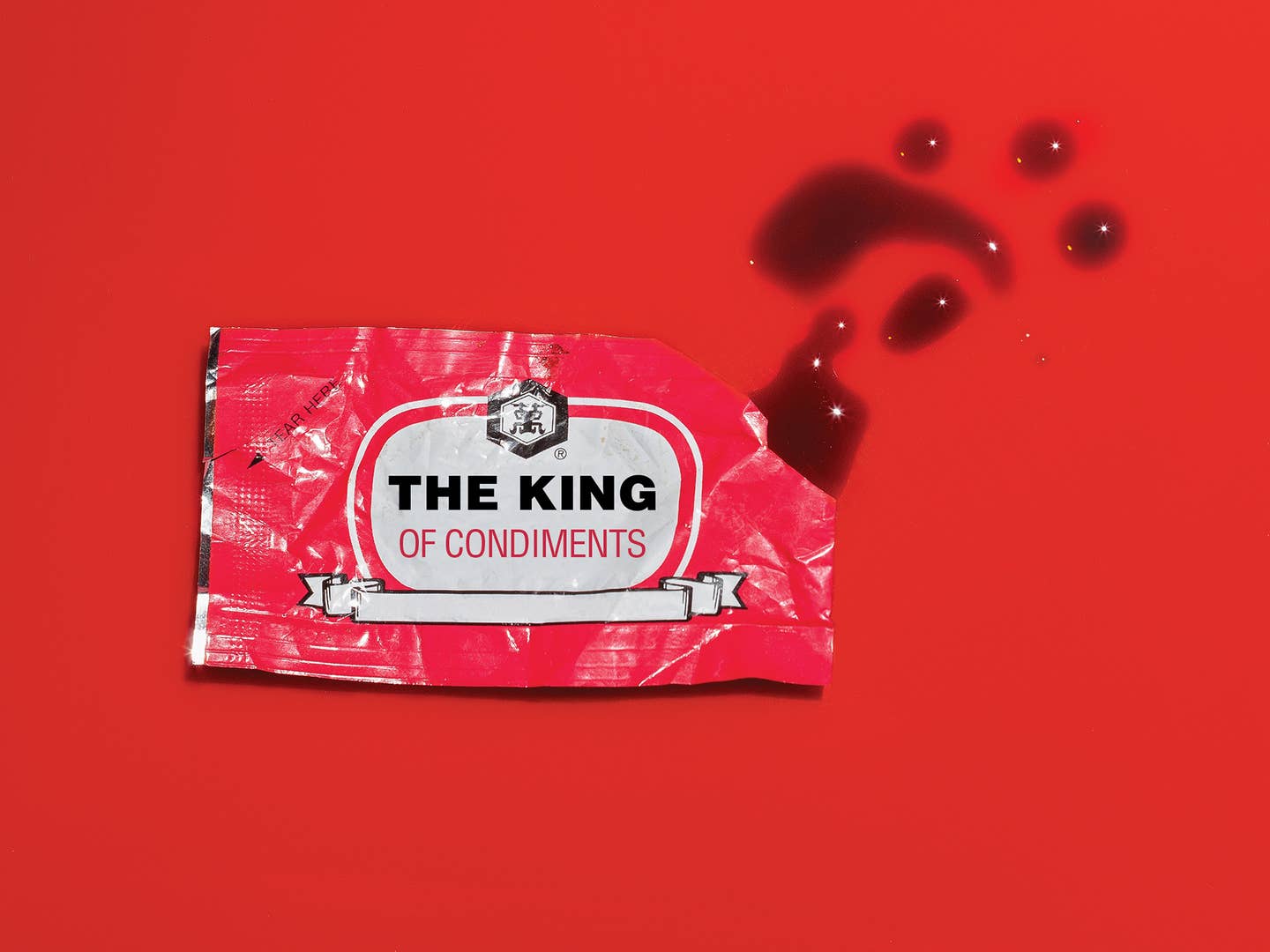
The ripe, heady aroma of soy sauce floods out as Ye Shoutian lifts the conical lid of one of the clay jars laid in rows in the courtyard. I breathe it in, my face reflected in the gleaming surface of the liquid. Ye dips a ladle into the jar to offer me a taste; the viscous liquid pools darkly in the bottom of the spoon, leaving a chestnut-colored sheen on its sloping sides. Its flavor is a world away from the thin, tart saltiness of the kind of soy sauce you might get in a sachet with a cheap takeout meal. It has profound umami richness, a backbone of salinity, and a hint of sweetness, enlivened by the sharp, tingling intensity of its fermentation.
Ye, now 60 years old, is the master craftsman of the Fu Kee Food Company, the last artisanal soy sauce factory in Hong Kong and one of a dwindling number in the whole of China. The company was founded in 1974 by Tsang Heh-kwan, a biochemist from Guangzhou, who learned her craft from a Fujianese soy sauce master in the 1950s. Fujian Province in southeastern China is regarded as the home of the finest traditional Chinese soy sauces.
Tsang was not only a soy sauce maker, Ye says, but also a scholar obsessed with the science, history, and culture of the condiment. Totally committed to her craft, she went on running the company until her late 80s with the assistance of Ye and another colleague; she died in 2012 at the age of 87. Ye continues to produce soy sauce the way she taught him, but says the elderly lady took most of her secrets with her to the grave. “I learned only the basics from her,” he says. “I don’t have anything like her depth of knowledge or expertise.” Ye has no apprentices, and he fears that the factory will close when he retires. Young people, he says, aren’t interested in the physically demanding work of making soy sauce the old-fashioned way.
Soy sauce is the archetypal Chinese seasoning. While its precise origins are obscure, it evolved out of a tradition of Chinese fermented sauces dating back more than 2,000 years, only coming to prominence in the last couple of centuries. By the time of China’s final dynasty, the Qing, soy sauce had eclipsed all its rivals to become one of the core Chinese flavorings, alongside salt, vinegar, sugar, ginger, and scallions. In Chinese cuisines, soy sauce is used both for its salty-savory flavor and for what the Chinese call its deep “red” color. It is not just a kitchen seasoning but also a table condiment and a brining agent for pickles and preserves.
The soybean has been grown in China for more than three millennia and is richer in protein than any other plant food. In its native state, however, the bean is unpalatable and indigestible, unless eaten very young. The Chinese originally viewed it as a staple food that could be eaten only in porridge form, after a lengthy boiling. Over time, however, they discovered they could unlock its nutritional bounty by ingenious processing, first through fermentation, and later by grinding the beans with water and coagulating the resultant warm milk to transform it into tofu. In a culture in which dairy is almost completely ignored and in which meat was until recently a luxury for most, the soybean became a vital source of nourishment and, after fermentation, the kind of rich umami flavors otherwise derived from meat. The technology for fermenting soybeans is thought to have grown out of a more ancient tradition of winemaking that relied on qu, fermentation agents derived from moldy grains.
Soy sauce is traditionally made by soaking and steaming yellow or black soybeans, mixing them with wheat flour, and then leaving them in dark, warm, humid conditions to be colonized by Aspergillus oryzae molds. The beans are then mixed with salt and water, transfered into clay jars, and left to ferment and mature. The molds produce enzymes that break down the beans' proteins into delicious amino acids, their oils into fatty acids, and their starches into sugars. As the sauce matures, a cascade of further chemical reactions creates a whole array of delicious tastes. The character of a soy sauce depends partly on the relative proportions of soybeans and wheat used to make it: Soybeans dominate in traditional Chinese soy sauces, giving a darker, richer result, while Japanese shoyus use roughly equal proportions of soybeans and wheat, making them lighter, sweeter, and tangier. (At his factory in Hong Kong, Ye uses a classic Fujianese formula of nine parts soybeans to one part wheat.)
When the fermentation is complete, the liquid soy sauce is strained from the solid beans. The old-fashioned method is to insert a cylinder of woven bamboo into the center of the jar and weigh it down so that it does't float. The soy sauce oozes through the bamboo and pools at the base of the cylinder, from where it can be drawn off with a dipper. The Cantonese call the first, thinner batch of liquid sheng chou ("fresh drawn" or light soy sauce), and the later, denser batches lao chou ("mature drawn" or dark soy sauce). Before sale, soy sauce is normally pasteurized to arrest its fermentation.
The Chinese have been making and eating thick fermented pastes known as jiang for more than 2,000 years, since before the time of Confucius. According to one old tale, the tradition came from the Queen Mother of the West, a Chinese goddess who taught the Emperor Han of Wu how to make "string-of-pearls cloud jiang" and other exotic sauces. But while their actual historical origins are obscure, what is certain is that jiang were the most important savory condiments of ancient China: The classic text The Rites of Zhou refers to 100 different varieties.
Originally, jiang sauces were concocted by mixing finely chopped meat with liquor, salt, and qu. After fermentation, jiang were eaten as side dishes or relishes. Over time, jiang came to be made increasingly with soybeans instead of meat and were used more as flavorings in the kitchen than table relishes. Until the emergence of soy sauce, jiang reigned supreme in the Chinese kitchen. A seventh-century writer, Yan Shigu, said it was like the general of the army of foodstuffs; later, jiang was often listed among the Seven Essentials of Daily Life, alongside firewood, rice, cooking oil, salt, vinegar, and tea.
It's unclear when soy sauce, the flavorful liquid strained from soybeans fermented in brine, became established as a seasoning in its own right. The first written reference to it by its modern name, jiang you, is in a thirteenth-century cookbook written by the Song Dynasty scholar Lin Hong. In his book, Lin had four recipes in which soy sauce was used in dressings for vegetarian ingredients that included garlic chives, bamboo shoots, and ferns. By the end of the Song Dynasty, a time of brilliant culinary innovation when the roots of modern Chinese cuisine began to take shape, jiang you had become the accepted term for liquid soy sauce. Over the following centuries, this relative upstart began to challenge the supremacy of jiang in the Chinese kitchen, and by the late eighteenth century its victory was complete.
Soy sauce also went international, becoming one of the pillars of cooking traditions across Japan, Korea, and Southeast Asia. And when Dutch traders started shipping Japanese soy sauce to India in the seventeenth century, it began to conquer the palates of Europeans too. Soy sauce was known in Europe before the soybean itself: The names for soybean in all European languages are derived from the Japanese word for soy sauce, shoyu. The first known western reference to soy sauce is in the journal of the English philosopher John Locke, who mentioned in 1679 a kind of sauce called "Saio [from shoyu]" from the East Indies. In 1688, another Englishman, Captain William Dampier, described encountering the sauce in his travels in what is now Vietnam: "I have been told that soy is made with a fishy composition…tho' a Gentleman of my acquaintance… told me that it was made only with Wheat and a sort of Beans, mixt with Water and Salt."
In modern Chinese cooking, soy sauce is an indispensable seasoning for both home cooks and professional chefs. In many parts of China, people still rely on traditional soy sauces made, like Fu Kee's, mainly from soybeans with a little added wheat, which is both dark and salty and richly mellow in flavor. In the Cantonese south and in diaspora communities, in contrast, people tend to use light soy sauce for flavor and saltiness and dark soy sauce where a deep color is required. Dishes cooked with soy sauce are often described as "red" (hong) because of their deep color, while dishes cooked without soy sauce may be called "white" (bai) or "clear" (qing). Soy sauce is often used in dressings and dips, the latter particularly for dumplings, and is also essential for the whole family of "red braised" (hong shao) dishes, a particular speciality of Shanghai and the Jiangnan, or Lower Yangtze, region.
The finest red-braised dishes I've ever tasted have been at Dragon Well Manor in Hangzhou, a restaurant run by a visionary entrepreneur called Dai Jianjun that specializes in what Westerners would call organic produce and artisanal ingredients. In the kitchens, veteran chef Dong Jinmu (now retired) was a master of the arts of red braising. He taught me how to transform the enormous tail of the bighead carp into Paddling on the West Lake, a classic Hangzhou dish in which the succulent tail lies in a dark glossy pool of sauce that is creamy on the lips and tongue. The secret of this and other red-braised dishes lies in the exquisite combination of a rich, traditional soy sauce with Shaoxing wine and sugar, enhanced by the delicate fragrance of scallions and ginger.
Chef Dong also made a favorite home-style version of the Jiangnan classic, red-braised pork, a slow-braised stew of pork belly and hard-boiled eggs known as Motherly Love Pork (ci mu rou). The dish takes its name from a tale about a mother who was waiting for her son to return home from the civil service examinations in Beijing. She waited for him on the appointed day, with a potful of red-braised pork simmering away on the stove. But he didn't come, so she let the stew cool and reheated it the following day. It wasn't until the third day that her son arrived, by which time the stew had been reheated three times, giving it an unparalleled depth of flavor. For her travel-weary son, the pork, fragrant with wine and soy sauce, sweet and voluptuous, embodied the joy of coming home.
Since the 1920s, some manufacturers have produced a cheat's version of soy sauce by abandoning traditional fermentation in favor of a fast, chemical transformation. According to Harold McGee's On Food and Cooking, they use hydrochloric acid to break defatted soy meal down into amino acids and sugars; this mixture is then neutralized and flavored with additives including salt and corn syrup. Amid such poor substitutes for the real thing, there are signs of a revival of interest in fine, traditional soy sauces. Major Cantonese brands including Lee Kum Kee and Pearl River Bridge are now producing premium soy sauces with a delicious complexity that sets them apart from others. And while serious chefs in Mainland China often lament the loss of artisanal food skills, Chinese middle-class consumers are increasingly keen to buy traditional foods.
Back in Hong Kong, Ye Shoutian expresses pessimism about the long-term future of the Fu Kee soy sauce factory. He and his colleagues, however, are trying to expand the reach of their products on the Chinese mainland, and hope that one day they’ll be able to sell their secret formulas to someone as committed as they are to nurturing Tsang Heh-kwan’s delicious legacy.
Make the Dragon Well's Braised Pork
Keep Reading
Continue to Next Story
